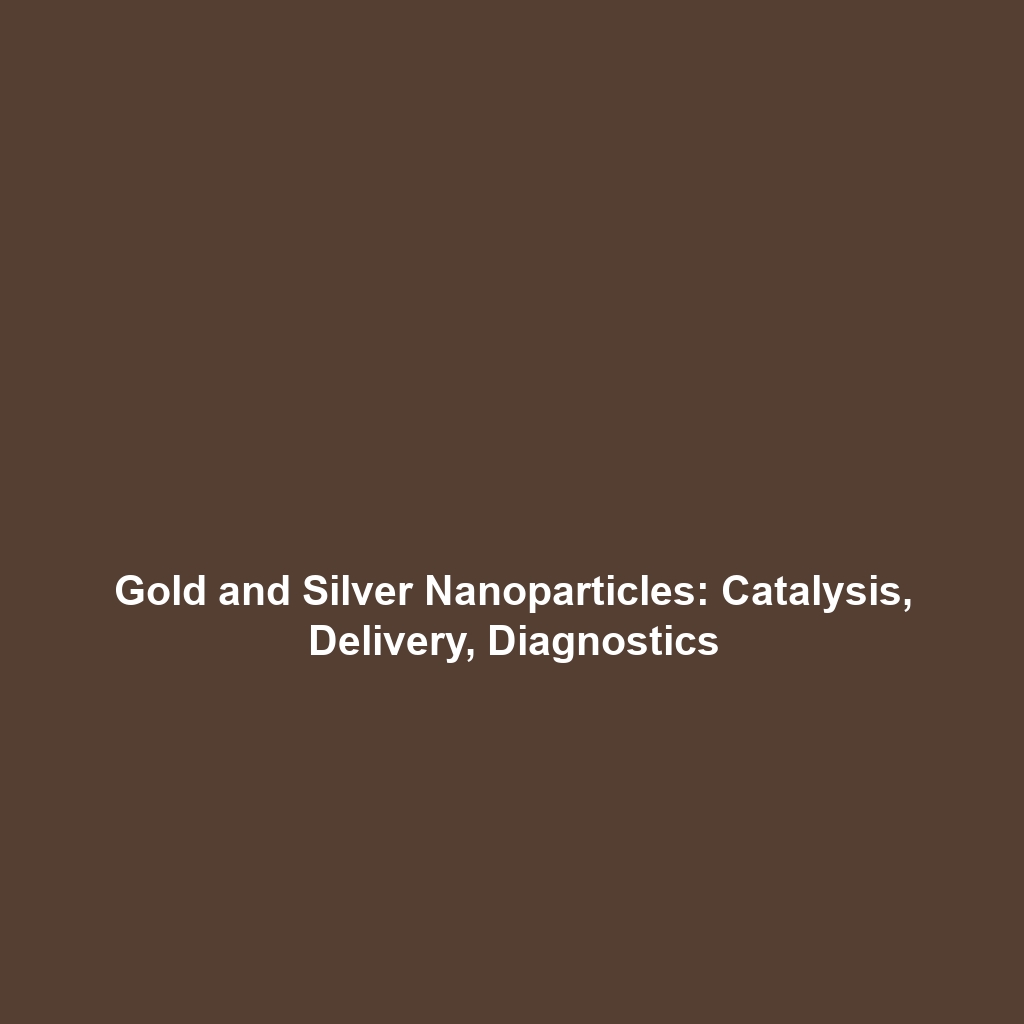Gold and Silver Nanoparticles Used in Catalysis, Drug Delivery, and Diagnostics
Introduction
Gold and silver nanoparticles have emerged as pivotal elements in the realm of Advanced Nanomaterials, markedly influencing sectors such as catalysis, drug delivery, and diagnostics. Their unique properties, including high surface area and tunable optical characteristics, render them invaluable for various applications. This article examines how these nanoparticles contribute to advancements in technology and healthcare, emphasizing their significance within the broader context of nanotechnology.
Key Concepts
1. Fundamentals of Nanoparticles
Nanoparticles are typically defined as particles smaller than 100 nanometers. Gold (Au) and silver (Ag) nanoparticles are particularly noted for their distinctive electronic and optical properties, making them suitable for use in catalysis and targeted drug delivery systems.
2. Mechanisms of Action
The efficiency of gold and silver nanoparticles in catalysis can be attributed to their ability to increase reaction rates and selectivity. In drug delivery, their surface can be modified to selectively release therapeutic agents, while in diagnostics, they enhance signal amplification through plasmonic effects.
Applications and Real-World Uses
Gold and silver nanoparticles have numerous practical applications across different fields:
- Catalysis: They are used in fuel cells and environmental remediation processes to enhance reaction efficiency.
- Drug Delivery: These nanoparticles can facilitate the targeted delivery of drugs to specific cells, improving therapeutic efficacy.
- Diagnostics: Used in biosensing applications, they provide high sensitivity and specificity in detecting biomolecules.
Overall, the applications of gold and silver nanoparticles in the category of advanced nanomaterials are transformative, providing innovative solutions across diverse fields.
Current Challenges
Despite the promising prospects of gold and silver nanoparticles, several challenges remain:
- Stability Issues: Nanoparticles can agglomerate or degrade over time, impacting performance.
- Toxicity Concerns: Potential toxic effects on biological systems can limit applications in medical settings.
- Regulatory Hurdles: The lack of standardized regulations can impede clinical applications.
These challenges highlight the need for ongoing research addressing the problems of nanomaterials.
Future Research and Innovations
Future endeavors in the study of gold and silver nanoparticles are geared towards enhancing their functionalities and applications:
- Smart Drug Delivery Systems: Innovations in targeting mechanisms to deliver drugs at cellular levels.
- Hybrid Nanomaterials: Combining different types of nanoparticles for synergistic effects.
- Sustainable Manufacturing: Developing green synthesis methods to minimize environmental impact.
These advancements are expected to revolutionize advanced nanomaterials in catalysis, drug delivery, and diagnostics.
Conclusion
Gold and silver nanoparticles play a critical role in the advancement of catalysis, drug delivery, and diagnostics. As part of the larger category of advanced nanomaterials, they offer significant potential for future innovations and applications. Researchers and industry professionals are encouraged to explore these promising areas.
To learn more about related topics, consider reading our articles on catalytic processes, advanced drug delivery systems, and diagnostic innovations.
